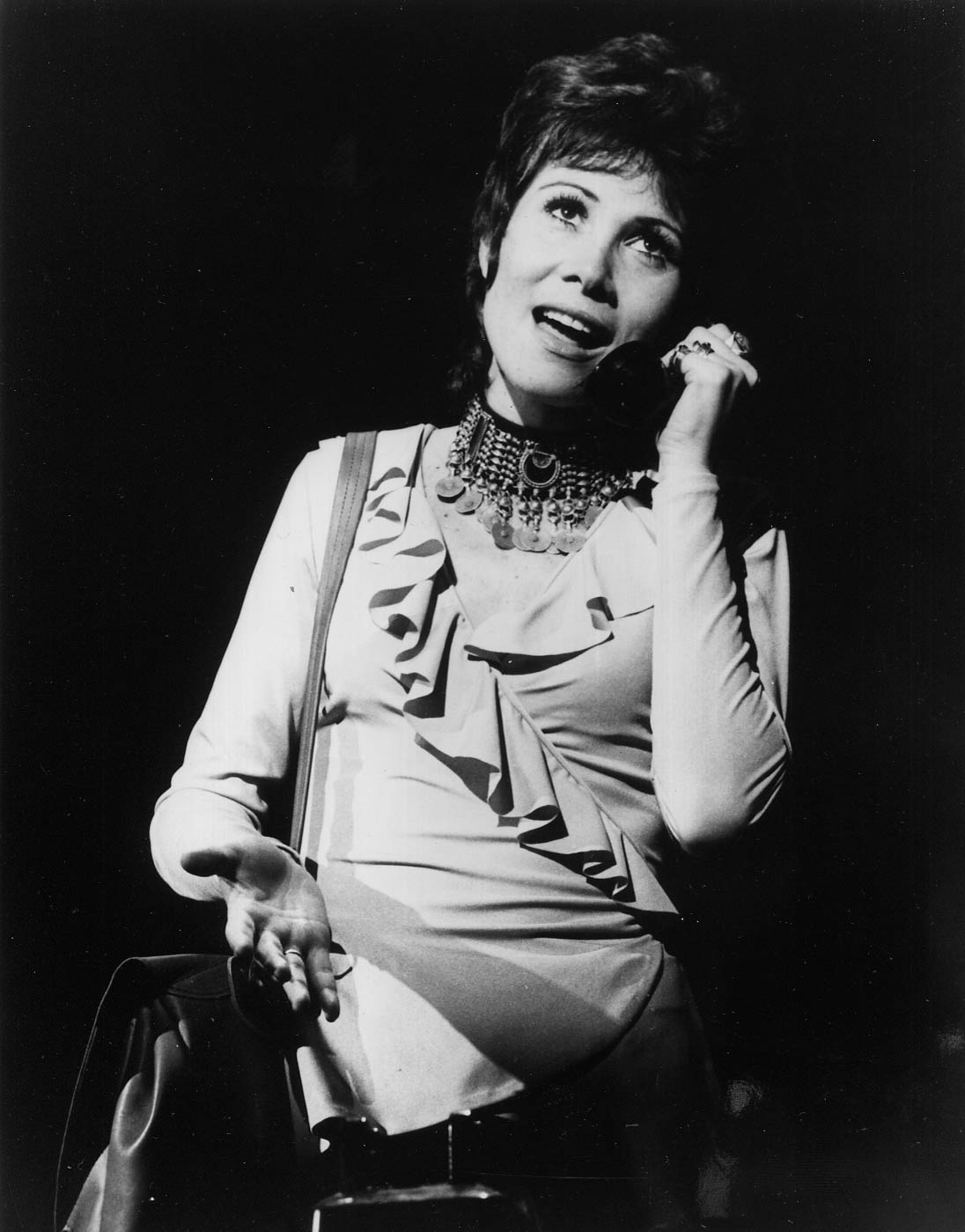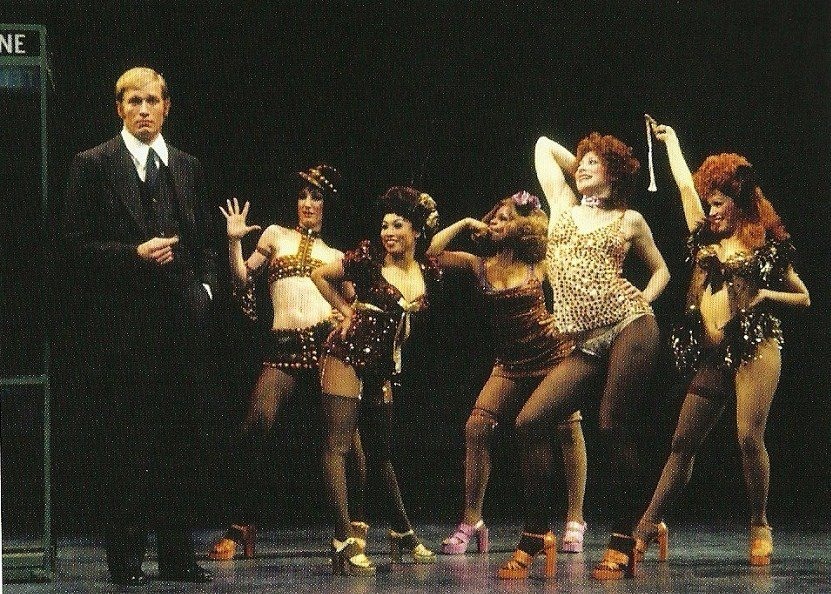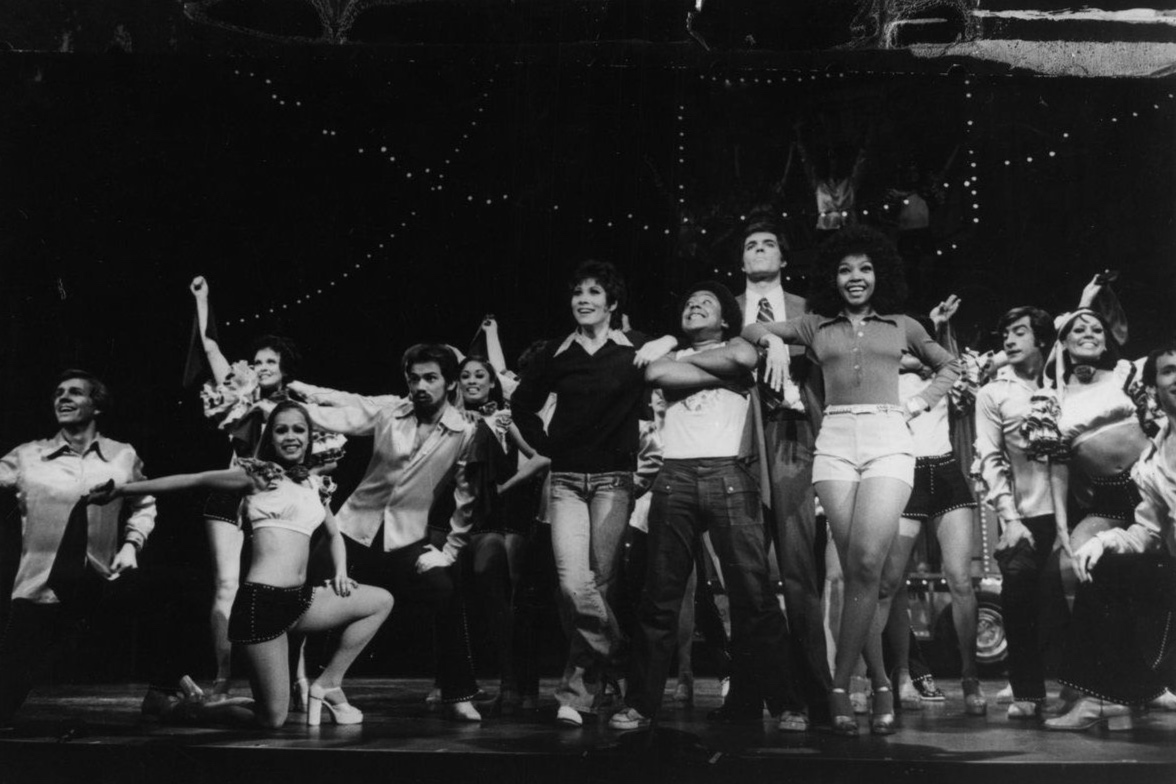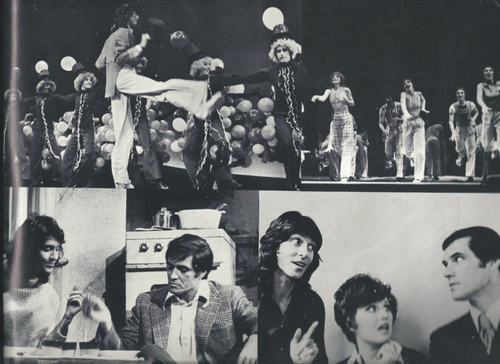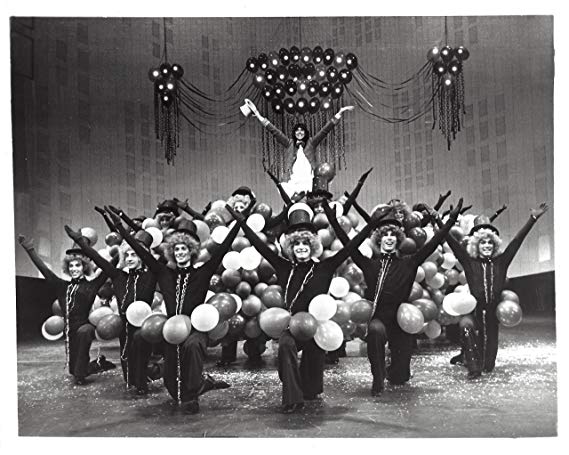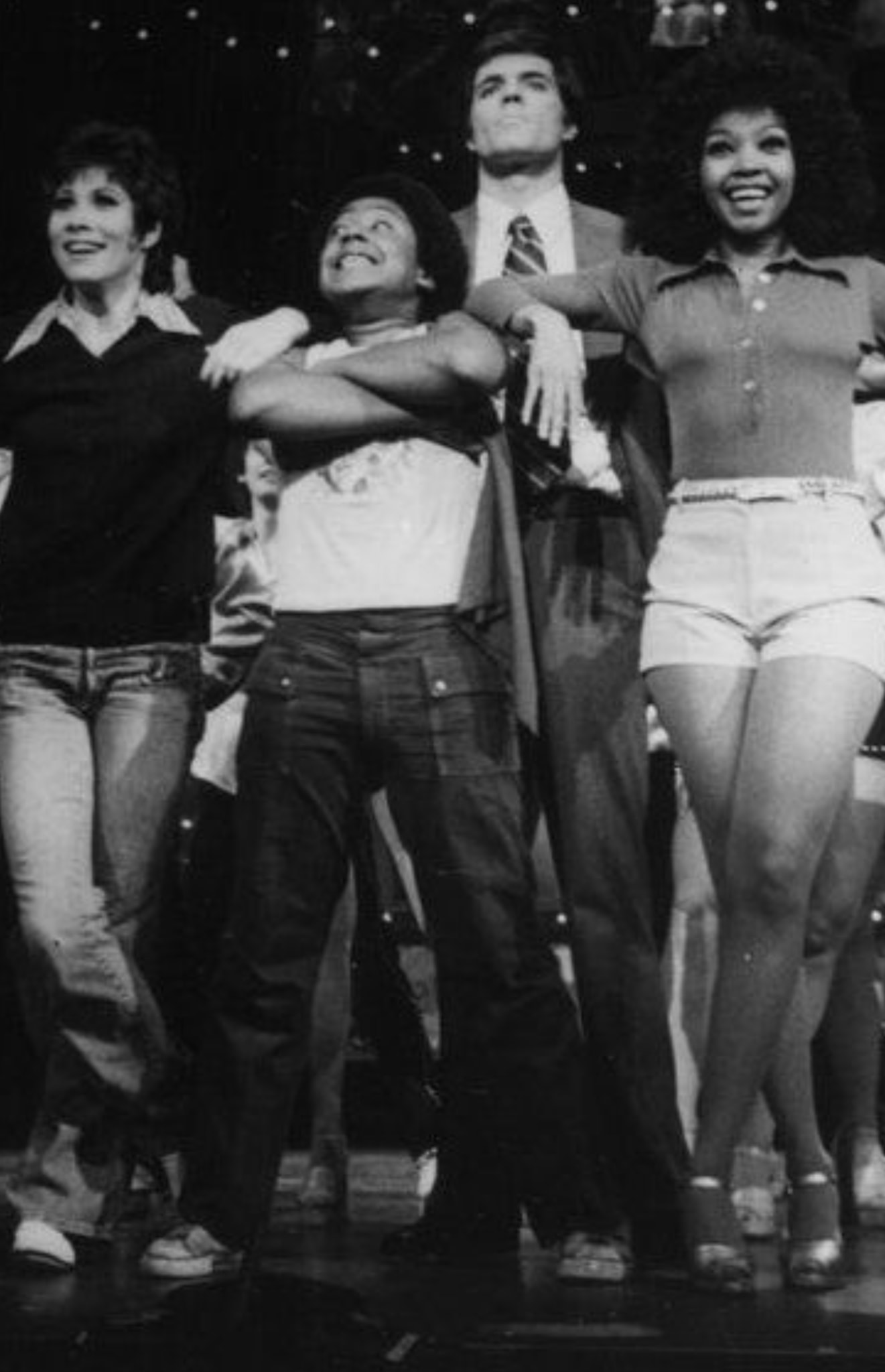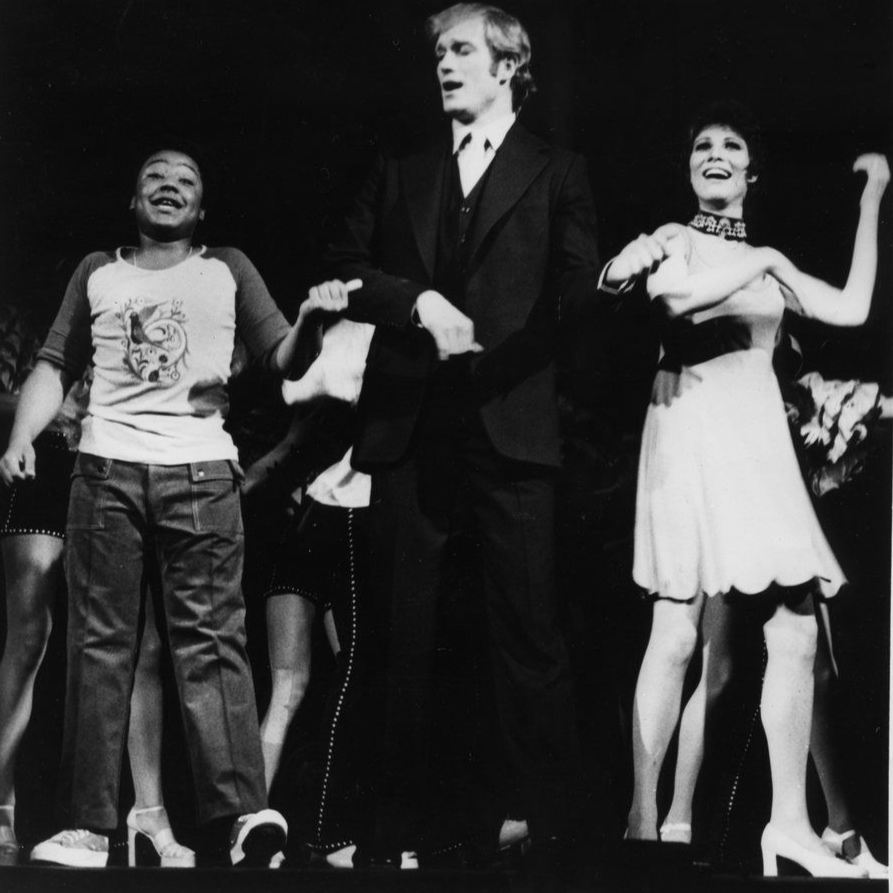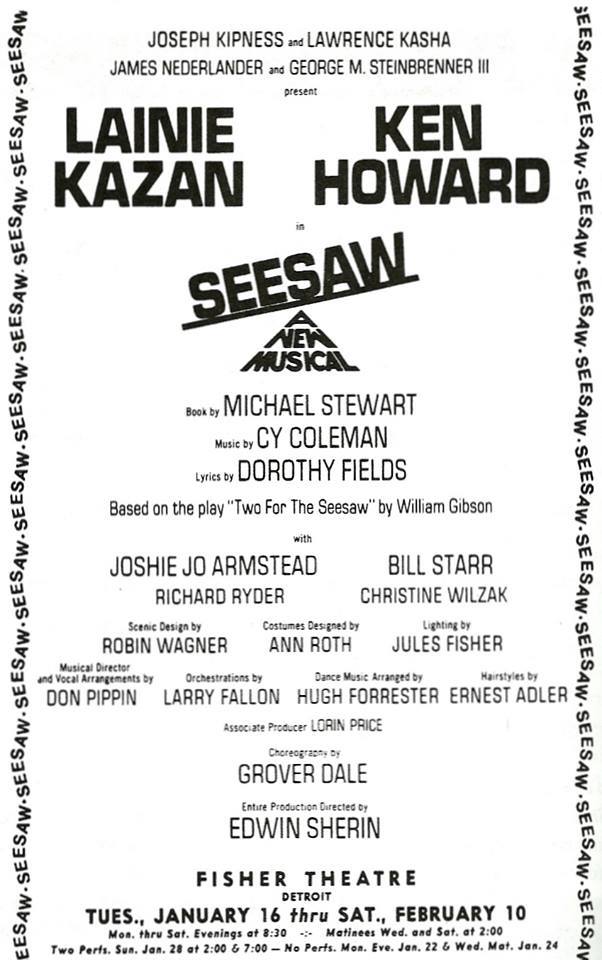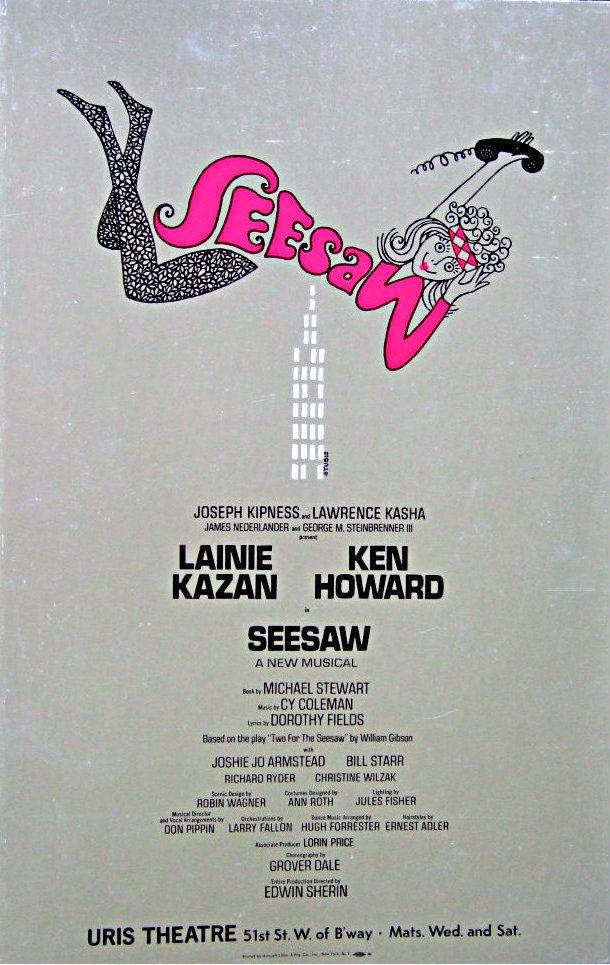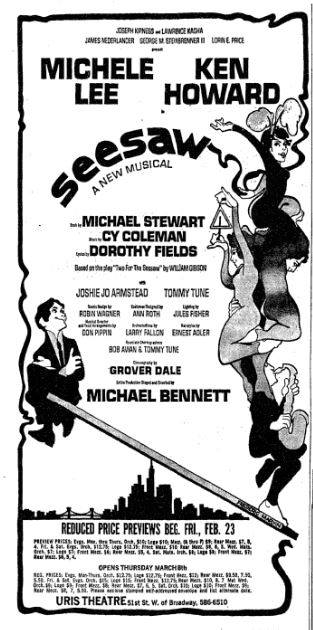Remembering Seesaw
A musical that was plagued with troubles during its gestation, that seemed to solve most of them before officially opening on Broadway, only to fold after approximately five months, was the 1973 Seesaw. Adapted from the William Gibson play Two for the Seesaw, with a book by Michael Bennett and a score by Dorothy Fields and Cy Coleman, Seesaw originally had a book by Michael Stewart, direction by Edwin Sherin, and was to star Lainie Kazan. As the musical’s hit song exclaims, however, “It’s Not Where You Start, It’s Where You Finish” and the show would arrive on Broadway with a very different cast of characters involved.
Gibson’s 1958 two-character play told the story of Jerry Ryan, a lawyer from Omaha, Nebraska who has recently separated from his wife and who has decided to start over fresh in New York City. There he meets, and ultimately falls in love with, the colorfully brash dancer from the Bronx named Gittel Mosca. The two begin a courtship despite the fact that they are polar opposites. By the show’s conclusion, it becomes clear that their dalliance must end and that Jerry must sort things out with his wife. The original Broadway cast starred Henry Fonda and Anne Bancroft and the production ran for 750 performances.
The idea of taking a two-character play set in two rooms was probably misguided from the start. It was an odd choice for turning Two for the Seesaw into a musical. How do you open it up, move it outside of the confines of its original setting, give it room to breathe (and dance), and add supporting characters? Sure, it could be done, but to what purpose and what ends? Initially, director-choreographer Michael Bennett was not attached to the show. As the musical was evolving, it was clear that it was having trouble making the transition from intimate play to big Broadway musical. Stewart’s book was not working and Sherin’s direction was not helping to solve the problems in telling what was already a challenging story to turn into a musical. The producers solicited Bennett’s input, which ultimately led to the firing of Stewart, Sherin, and leading lady Kazan (whom Bennett felt was too heavy to convincingly play a professional dancer). Bennett took over as director and choreographer of the show, with Grover Dale (who was the show’s original choreographer) credited as co-choreographer (as well as Tommy Tune and Bob Avian assisting). Bennett also took over the writing (or rather, shaping) of Seesaw’s book, enlisting the uncredited assist from playwright and play doctor Neil Simon. As the new leading lady starring opposite the Jerry Ryan of Ken Howard, Bennett cast Michele Lee in the role of Gittel. Perhaps the biggest change Bennett insisted upon was moving away from the stark realism of the original design and tone for the show, opting for a more contemporary, glossy, almost impressionism-meets-art deco take. This also altered the show’s book, staging, and choreography immensely.
Seesaw out of town had a very different team.
At the heart of Seesaw was still the romance between Jerry and Gittel, but there were many musical sequences that took the two out into the world of 1970s New York City. Oftentimes, these moments and the choreography had very little to do with the plot itself, but they were executed so darned brilliantly that they buoyed Seesaw and helped to illustrate how these two unlikely lovers could come together, inspired by the pulse and populous of the Big Apple. Bennett made Seesaw work, through his usual clever innovation and his ability to paint a bigger picture, something that was always needed in turning that little play into a big Broadway musical.
Cy Coleman has written some catchy and vibrant scores over the years (Little Me, Sweet Charity, City of Angels) and Dorothy Fields was certainly one of the finest Broadway lyricists, especially where character development was concerned (illustrated in such shows as A Tree Grows in Brooklyn and Sweet Charity). Their combined work on Seesaw yielded exhilarating musical theatre, bold melodies and witty wordplay represented in such ditties as “Nobody Does It Like Me,” “Welcome to Holiday Inn,” “It’s Not Where You Start” and the title song. And though the whole doesn’t always supersede the sum of its parts. this is a score that deserves to be much better known than it is.
Seesaw opened at Broadway’s Uris Theatre (now the Gershwin Theatre) on March 18, 1973 and eventually transferred to the Mark Hellinger Theatre playing a total of 296 performances. Along with Lee and Howard, the cast also included Tommy Tune, Baayork Lee, Thommie Walsh, Anita Morris, Giancarlo Esposito, Wayne Cilento, Amanda McBroom, and LaMonte Peterson. Seesawreceived good to glowing reviews and was nominated for 7 Tony Awards, including Best Musical. Bennett won for his choreography and Tune took home a trophy for Best Featured Actor in a Musical. Best Musical that season went to Raisin(a musical version of the play A Raisin in the Sun). Arguably, the most depressing loss was Cy Coleman and Dorothy Fields for Best Score. That accolade ultimately went to Alan Jay Lerner and Frederick Loewe’s score for Gigi, which was mostly a rehash of their sublime film score and a handful of serviceable (if mostly lackluster) new songs that were added. Best Book of a Musical went to Hugh Wheeler for his rewrite of Candide for the acclaimed Harold Prince revival (Prince took home the Best Director prize).
So how come Seesaw didn’t run longer or win a greater number of Tony Awards? The problem may have come with the fact that the production had exhausted its budget and had left little to spend on promoting the show. This, combined with an expensive move from the Uris to the Mark Hellinger so early in the run, left the production tapped. It cannot have helped that Seesaw opened in March of 1973. The 1973 Tony Awards were held on March 25, 1973 and Seesaw missed the nomination cut-off. (How would it have fared against A Little Night Music and Pippin, one wonders?) The show had closed in December of 1973 and was long gone by the time the 1974 Tony Awards came around, so there was nothing to be gained promotionally when that telecast had aired (except in promoting the show’s tour, which proved to be a success with Lucie Arnaz, John Gavin, in the leads and Tommy Tune reprising his Tony-winning turn). Seesaw may have simply been a victim of poor budgeting and bad timing.
Mark Robinson is the author of the two-volume encyclopedia The World of Musicals, The Disney Song Encyclopedia, and The Encyclopedia of Television Theme Songs. His forthcoming book, Sitcommentary: The Television Comedies That Changed America,will hit the shelves in October, 2019. Hemaintains a theater and entertainment blog at markrobinsonwrites.com.


